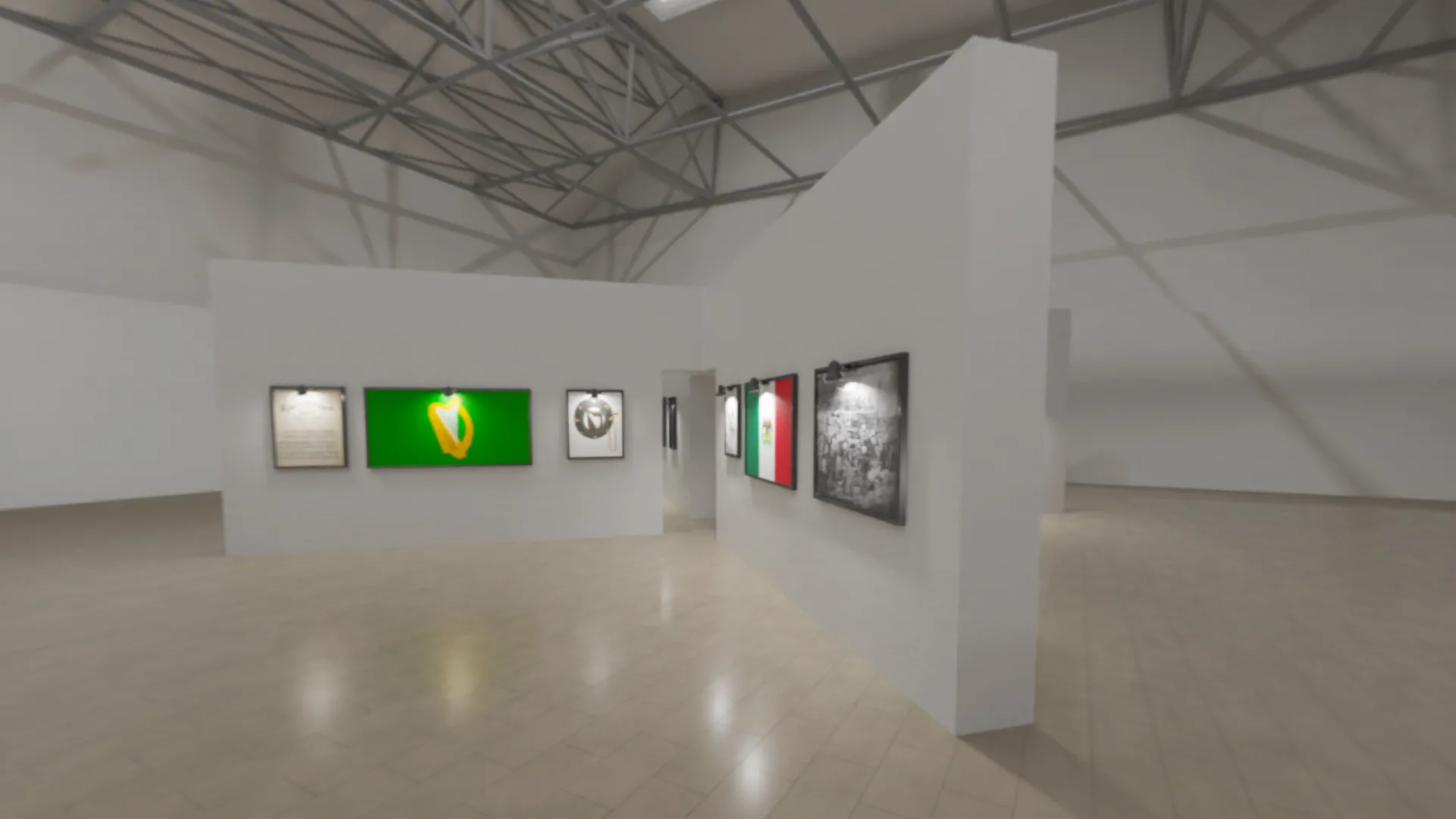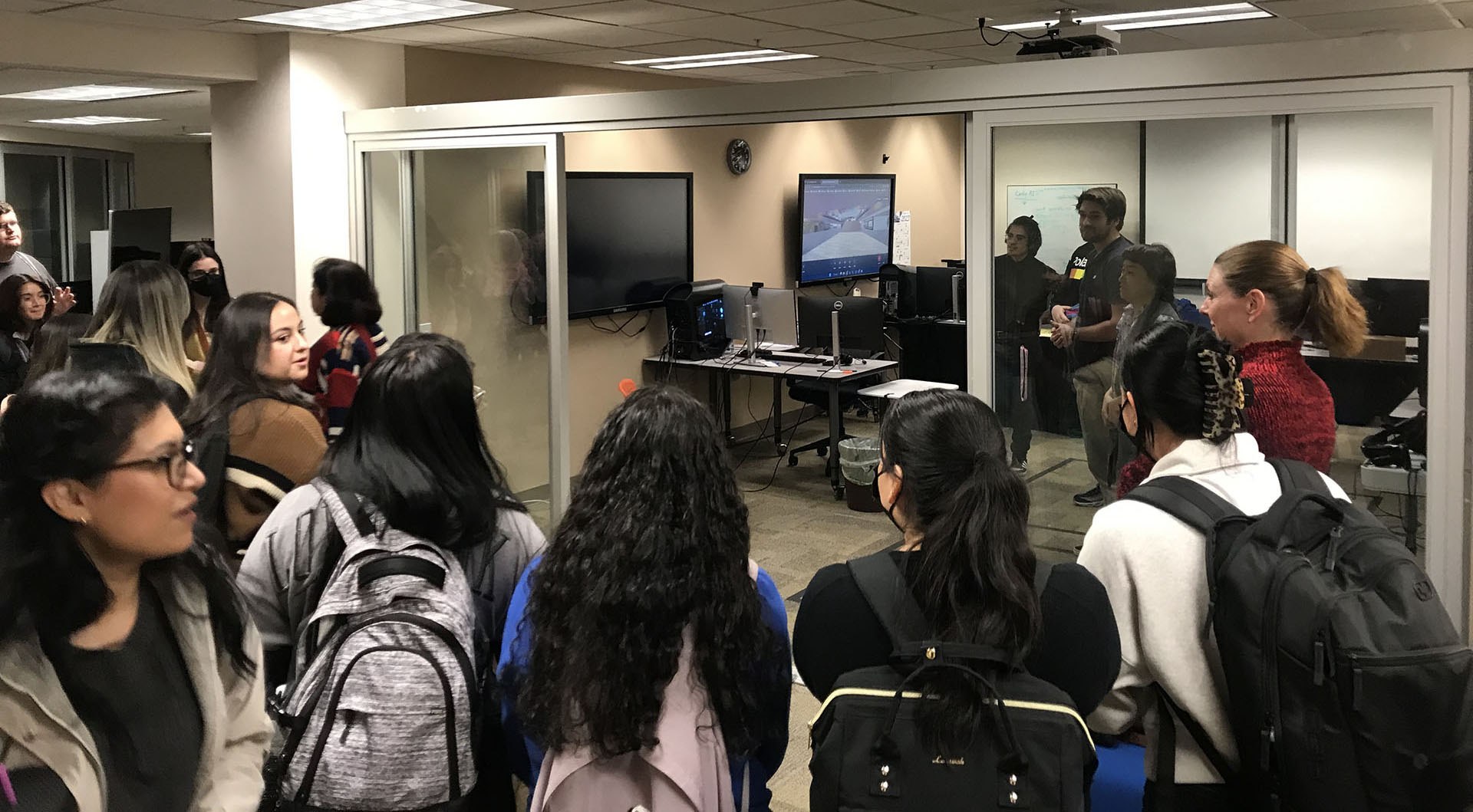Alan Llavore | Office of Strategic Communication | (909) 537-5007 | allavore@csusb.edu

Thanks to a collaboration with the Extended Reality for Learning (xREAL) Lab, a group of students studying to become teachers in CSUSB’s James R. Watson and Judy Rodriguez Watson College of Education learned how to integrate technology such as augmented reality (AR) into their classroom planning.
The students, who are working toward multiple subject teaching credentials, were enrolled in the Social Studies and the Arts Teaching and Learning classes (EDMS 5106 A/B) taught by Jordi Solsona-Puig, assistant professor of education. They were able to practice integrating technology, such as AR, into classroom planning. The projects designed are showcased on the Social Studies Unit Design Projects’ Gallery website.
The main goal of the collaboration between Solsona-Puig’s EDMS 5106 A/B class and the xREAL Lab was to integrate technology in the lesson planning, specifically the resources found through 3D and AR from an equitable approach to designing learning experiences. Remarkably, all bilingual students enrolled in the course created their final semester projects completely in Spanish.
This collaboration began in November 2022 at a faculty development course. Solsona-Puig, who previously had no experience working with the xREAL Lab or augmented reality, said he contacted Mihaela Popescu, faculty director for the xREAL Lab, for a possible collaboration.
“She has been fantastic since minute one,” Solsona-Puig said. “I really loved the enthusiasm she displayed, and it was contagious, both for me and my students at the Watson College of Education. So, I decided to plan a field trip and set up the collaboration with my students, the future teachers, and invited an external expert, Dr. Gwen Aiello, to present in class about implementing AR and 3D with historic content in elementary settings. As a result, all student groups included a 3D or AR component in their unit plans as a final semester project.”
Some students walked the extra mile and engaged in a close collaboration with the xREAL Lab to create original AR materials to be integrated in their lesson plans. xREAL Lab staff and instructional technologist Bobby Laudeman and chemistry department videographer Francisco Casillas worked with Solsona-Puig’s students to find the most appropriate technology suitable for the students’ final project unit lesson plan.

Students Natividad Gonzalez, Valhalla Lash and Gabriella Perez curated an augmented reality gallery walk showcasing artifacts from their three-lesson unit, “Immigration and Migration to California (1850-1900).” Students Mia Cazares and Estefania Silva created a transportation timeline for their three-lesson unit, “Past vs. Present – People, Places and Things.”
“It was an exciting experience to team up with these students on an innovative project aimed at enhancing the education of young learners using a visually engaging digital tool,” Laudeman said. “Together, we developed an AR web app that allows students to explore a timeline featuring a curated collection of 3D models representing different forms of transportation.”
Casillas described how he and Laudeman worked with the students. “We created an environment based on the student’s requirements in a 3D software, and took 360 images of all points of interest,” he said. “We plugged in these series of images in another software where we were able to create a traversable space with annotations all within the confines of accessibility. It was a fun and challenging experience working within the guidelines of students’ requirements while making sure it’s accessible to all.”
Both Solsona-Puig and his students enjoyed the opportunity to work with the lab to explore the use of technology in education.
“Working with the xREAL Lab was by far the best experience and I am thankful to have had the opportunity to work with them,” said Gabriella Perez, a first-year student in the Multiple Subject Credential Program. “Being able to collaborate and bring this vision to life has opened my eyes to using AR in my future classroom. I believe this technology needs to be implemented into more classrooms as it can be beneficial for all students, especially for students who don’t feel that social studies is their strong suit.”
“I believe that despite some initial resistance and doubts, the teacher candidates finally embraced integrating this technology in their lesson planning,” Solsona-Puig said. “The students overwhelmingly agreed that the opportunity being offered by the xREAL Lab was one of the highlights of the course and these technologies are very fun to be applied in their future classes.
“Educational technology is one of the areas of interest in my research. I always thought that the potentialities of combining augmented reality and lesson design are immense, and the results speak loudly of the possibilities. There is a crucial equitable component in using AR technologies in the classroom, not only in social studies,” he said. “It reduces the barriers for some students such as time, space or language. Multiple access to the content, virtual field trips or instant language translation can help reduce the learning gap of minoritized students. I am really excited to continue this collaboration with the xREAL Lab and I am planning to publish an article on using AR in teaching history with the data collected this semester. This study has been recently awarded a research grant from the Watson College of Education.”
About xREAL: Extended Reality for Learning (xREAL) Lab with Information Technology Services (ITS) at California State University, San Bernardino (CSUSB) is an interdisciplinary technology innovation hub that brings together faculty, students, and staff to imagine and design immersive learning experiences with 3D modeling and printing, augmented reality, mixed reality, virtual reality, motion caption, and machine learning technologies. Each year, xREAL works with faculty fellows and undergraduate and graduate students across disciplines to provide a vision for future teaching and learning, mentorship and hands-on experience for the students, and sustainable innovation for the larger campus community. xREAL work is made possible thanks to generous support from CSUSB President Tomás D. Morales, ITS Vice President Samuel Sudhakar, and the Vital and Expanded Technologies Initiative (VETI).